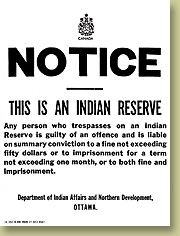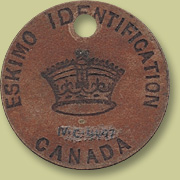|
|
Arrival of Strangers - The Last 500 YearsIntergovernmental RelationsReserves and Other CommunitiesIndian reserves are Crown lands held in trust for Status Indian bands. Under the Royal Proclamation of 1763, Aboriginal lands could be surrendered only to the Crown, not to private interests. Since 1850, as Aboriginal people have ceded land through treaties, a portion of these lands has been reserved for their use. In areas where there are no treaties, the Government of Canada has created reserves. Today, Indian reserves represent a fraction of the land once occupied by Aboriginal people. Aboriginal people's rights of access to resources located on reserves and other Crown lands are still being disputed. Métis and Inuit do not have reserves. Alberta's 1938 Métis Betterment Act provided for the allocation of provincial Crown lands as "Métis colonies." In the 1950s, the federal government relocated Inuit communities from Northern Quebec to Grise Fiord and Resolute in the High Arctic. The government's reasons ranged from humanitarian concerns to the need to assert Canadian sovereignty in the High Arctic. |

